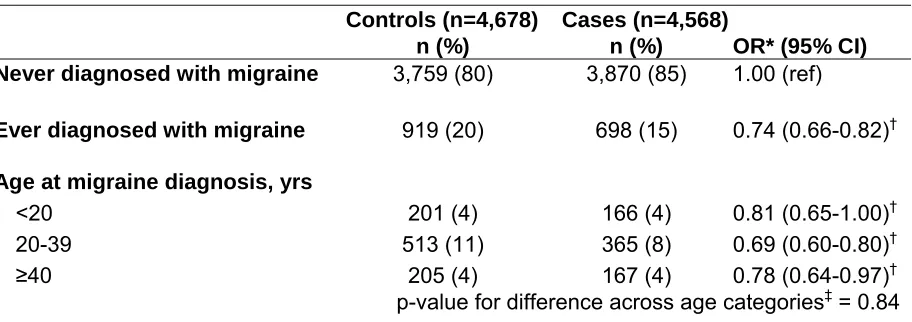Relationship between migraine history and breast cancer risk among premenopausal and postmenopausal women.
Full text
Figure



Related documents
Therefore, this study was done to determine the contribution of reproductive factors and family history for breast cancer among premenopausal women in Kuala Lumpur,
An increased risk of breast cancer emerged in women with a family history of ovarian cancer, too: in comparison with women with no such history, the RR for breast cancer was 1.4 (95%
Methods: In a prospective nested case-control study of 104 premenopausal women with incident breast cancer and 225 matched controls, all characterized by regular menstrual
In the present study, we evalu- ated, separately for premenopausal and postmenopausal women, whether the CYP17 polymorphism was indepen- dently related to breast cancer risk or
Methods: In a prospective nested case-control study of 104 premenopausal women with incident breast cancer and 225 matched controls, all characterized by regular menstrual
Positive associations between circulating androgens in postmenopausal women and risk of breast cancer have been observed consistently [1], although the association may vary according
In addition, based on approximately 9000 postmenopausal and 1200 premenopausal women with incident breast cancer from 10 European countries, the European Prospective Investigation
Modulation of breast cancer risk biomarkers by high dose omega-3 fatty acids: phase II pilot study in premenopausal women. Moore MR,